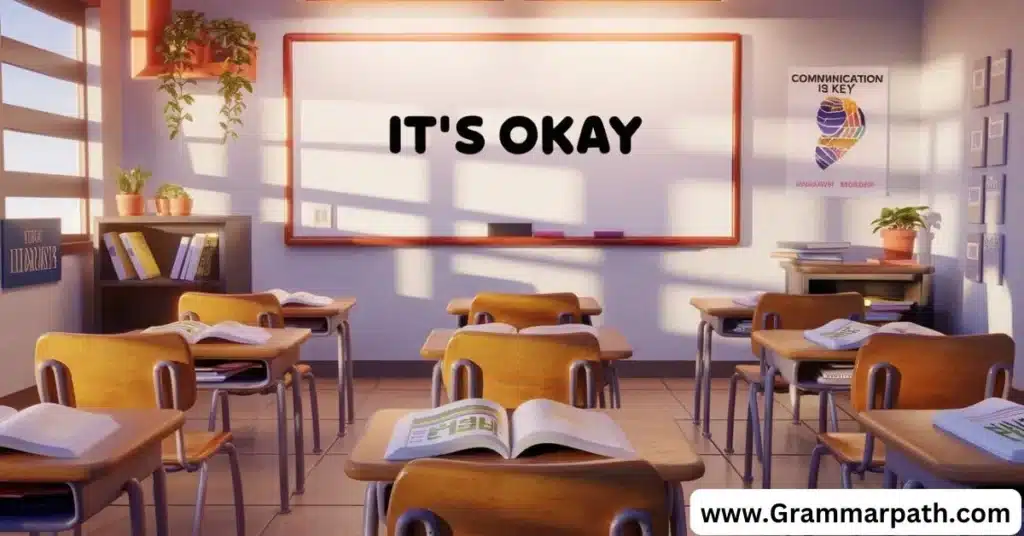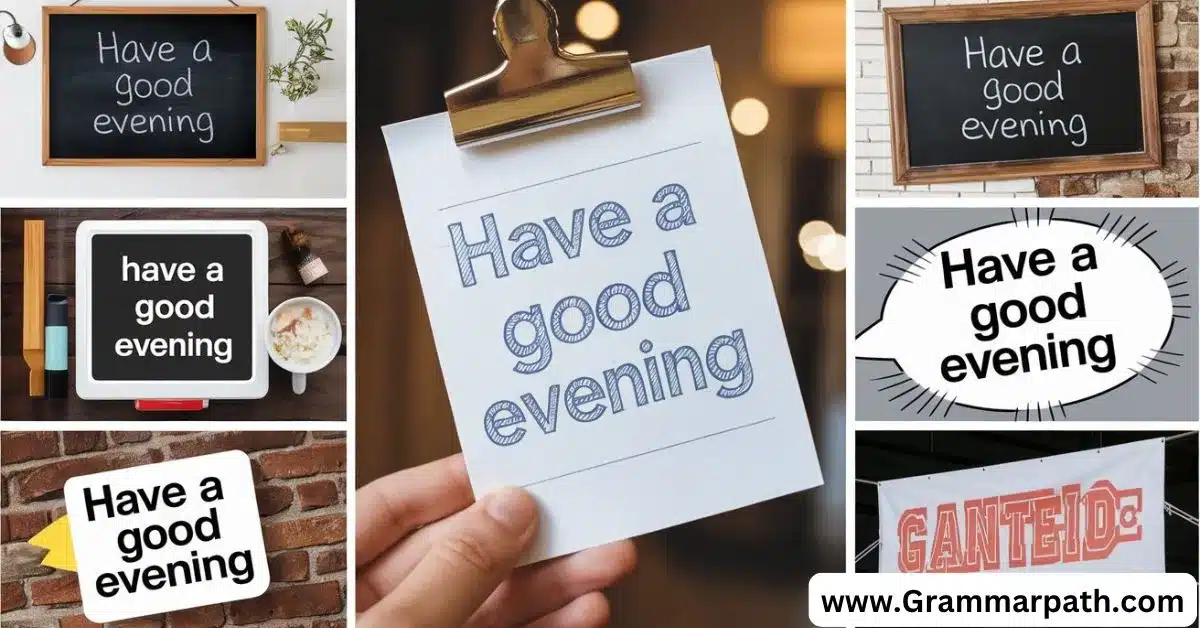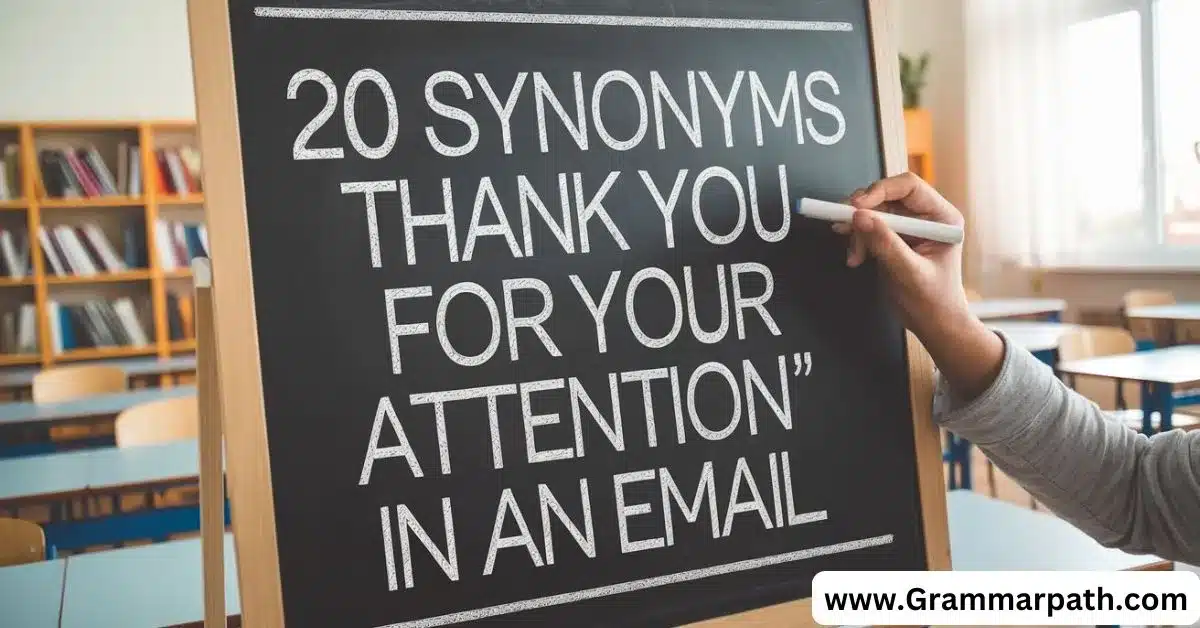
30 Professional Ways to Say “No Worries” in an Email
When communicating professionally, especially through email, your choice of words can shape how you are perceived. You want to come across as competent, polite, and helpful, but also approachable. One of the most common phrases people use to diffuse concerns or show understanding is “No worries”
However, it’s not always the best choice in a formal or professional setting. Whether you’re responding to an apology, a thank you, or any casual exchange, it’s good to have professional alternatives ready that maintain the right tone for the situation.
Is It Professional to Say “No Worries”?
While “No worries” is a popular phrase in informal conversations, it might not always strike the right chord in business emails. In professional settings, you want to maintain a tone of respect and understanding.
Although the phrase is friendly, it can sometimes come off as too casual, especially when dealing with clients, managers, or colleagues. So, how can you express the same sentiment without sounding unprofessional? Let’s explore 30 professional ways to say “No worries” that will help you in various scenarios. These alternatives are useful whether you’re replying to an apology, a thank you, or just easing a colleague’s concerns.
What to Say Instead of “No Worries” in an Email
- No Need to Apologize
- Please Don’t Worry About It
- No Inconvenience
- Don’t Worry About It
- Consider It Done
- I Understand Completely
- No Worries at All
- I’m Here to Help
- No Need for Concern
- Everything’s Under Control
- We’ve Got This Covered
- Let’s Move Forward
30 Professional Ways to Say “No Worries” in an Email
Here are 30 Professional Ways to Say “No Worries” in an Email:
1. It’s Okay

A simple yet effective way to respond professionally. If a colleague or client apologizes for a minor mistake or misunderstanding, saying “It’s okay” can acknowledge the situation without making a big deal out of it.
Scenario Example:
Subject: Apology for Missed Meeting
Hi Sarah,
No worries about missing the meeting. It’s okay, and we can reschedule for a time that works best for you. Looking forward to catching up soon.
Best regards,
John
2. It’s All Right
Similar to “It’s okay,” this phrase works well in both personal and professional emails. It shows you’re understanding and not dwelling on the issue.
Scenario Example:
Subject: Apology for Late Submission
Hi Jake,
Thank you for letting me know about the delay. It’s all right as long as we can get the final draft by tomorrow. Let me know if you need any help.
Best,
Susan
3. No Issue
Using “No issue” keeps the response neutral and professional, signaling that there’s nothing to worry about. It’s especially useful when someone apologizes for a misunderstanding or a minor problem.
Scenario Example:
Subject: Apology for a Miscommunication
Hi Mark,
I understand there was some confusion about the project deadline. No issue—we can extend it by two days to make sure everything is in order.
Kind regards,
Lily
4. All Good
“All good” can be a more laid-back response, but it’s still professional enough when dealing with colleagues you know well. It shows you’re not worried and are willing to move forward without hesitation.
Scenario Example:
Subject: Apology for Late Feedback
Hi Tom,
Thanks for your message. All good—we can finalize the report once I get your feedback tomorrow. Appreciate your input.
Cheers,
Karen
5. Nothing to Worry About
If someone expresses concern over a minor issue, saying “Nothing to worry about” reassures them in a professional way. It’s direct and to the point but still friendly.
Scenario Example:
Subject: Apology for a Minor Mistake
Hi Alex,
I noticed the small typo in the report, but don’t worry, there’s nothing to worry about. I’ve already made the correction on my end.
Thanks,
Michelle
6. No Harm Done

This phrase works well when someone is apologizing for something that didn’t have a major impact. It communicates that there’s no lasting damage, and you’re ready to move forward.
Scenario Example:
Subject: Apology for Overlooking an Email
Hi Dave,
I saw your earlier message about missing the email chain. No harm done, let’s continue from here and finalize the details.
Best,
Emily
7. No Problem
A classic response, “No problem” is a versatile phrase that can be used in both formal and informal emails. It signals that the issue at hand isn’t a big deal.
Scenario Example:
Subject: Apology for a Missed Call
Hi Mike,
Thanks for the heads-up about missing the call today. No problem, we can reschedule for tomorrow afternoon.
Cheers,
Anna
8. You’re Welcome
If someone thanks you for your assistance, responding with “You’re welcome” is a professional way to acknowledge their appreciation.
Scenario Example:
Subject: Thank You for Your Assistance
Hi James,
Thank you for your help on the project. You’re welcome—glad I could assist! Let me know if you need anything else.
Best,
Rita
9. My Pleasure
For an extra touch of professionalism, “My pleasure” works well, especially when responding to thank yous in formal business exchanges.
Scenario Example:
Subject: Thanks for the Quick Turnaround
Hi Julia,
Thanks for getting the updated files over so quickly. My pleasure—happy to assist anytime.
Regards,
Chris
10. Happy to Help
Offering help often comes with a response of thanks. When someone thanks you, replying with “Happy to help” can keep the conversation polite and professional.
Scenario Example:
Subject: Thank You for Your Guidance
Hi Rachel,
Thanks again for guiding me through the new software. Happy to help whenever you need assistance.
Best,
Tom
11. Not a Problem
Similar to “No problem,” this response can be used in professional environments without coming across as too casual.
Scenario Example:
Subject: Thanks for Covering My Shift
Hi John,
I really appreciate you covering for me during the meeting. Not a problem—glad I could help out!
Thanks again,
Lisa
12. Of Course

This phrase adds a polite and understanding tone to your email. It’s especially useful when reassuring a client or colleague.
Scenario Example:
Subject: Thank You for Your Time
Hi Matt,
Thanks for accommodating my schedule this week. Of course—I’m happy to be flexible when needed.
Kind regards,
Sarah
13. Absolutely
When you want to emphasize your willingness to help, “Absolutely” is an enthusiastic yet professional way to respond.
Scenario Example:
Subject: Apology for a Short Deadline
Hi Jenny,
I’m sorry for the short notice on this project. Absolutely no problem—happy to get it done by tomorrow.
Thanks,
Brian
14. Sure Thing
“Sure thing” works well when you’re familiar with your colleague or client and want to maintain a professional but casual tone.
Scenario Example:
Subject: Confirmation of Assistance
Hi Sam,
Thanks for offering to help with the presentation. Sure thing—I’ll send over the slides for your review.
Best,
Kate
15. Anytime
This phrase conveys that you’re always willing to help, making it a warm and professional way to respond to someone’s thanks.
Scenario Example:
Subject: Thank You for the Quick Response
Hi Angela,
Thank you for the quick response to my inquiry. Anytime—glad I could assist!
Best regards,
David
16. No Trouble at All
Another way to reassure someone that they haven’t inconvenienced you, “No trouble at all” is perfect for maintaining a professional tone.
Scenario Example:
Subject: Apology for a Last-Minute Change
Hi Mark,
Thanks for the heads-up on the changes. No trouble at all I’ve updated the document and it’s good to go.
Best,
Jennifer
17. Happy to Be of Service
This phrase sounds especially professional and formal, often used in customer service or with clients.
Scenario Example:
Subject: Thank You for the Detailed Explanation
Hi Clara,
Thanks for explaining the process so clearly. Happy to be of service feel free to reach out if anything else comes up.
Best regards,
Ben
18. Don’t Mention It

This is a friendly and polite way to acknowledge a thank you without making a big deal of it.
Scenario Example:
Subject: Thanks for the Referral
Hi Mary,
Thanks again for referring that client to me. Don’t mention it—always happy to help!
Best,
Steve
Pro Tip:
The most important paragraph in this article is the introduction, which hooks the reader with the focus keyword and sets the tone. It explains why “No worries” might not always be the best phrase in professional communication and leads into the solution: offering professional ways to express understanding or acknowledgment in emails.
19. No Need to Apologize
This phrase works when someone is overly concerned about a minor mistake. It reassures them without sounding dismissive.
Scenario Example:
Subject: Apology for Miscommunication
Hi Susan,
Thanks for your message, but no need to apologize—I understand how things can get mixed up. Let’s move forward from here.
Best,
Tom
20. Please Don’t Worry About It
Offering comfort in a formal way, “Please don’t worry about it” shows that you understand the situation and want to keep things light.
Scenario Example:
Subject: Apology for Rescheduling
Hi Mark,
I understand that things come up unexpectedly. Please don’t worry about it—we can reschedule for a time that works for you.
Best regards,
Rachel
21. No Inconvenience
This phrase reassures the recipient that their actions didn’t cause any trouble and keeps the conversation polite.
Scenario Example:
Subject: Apology for Requesting Changes
Hi John,
I received your request for changes to the proposal. No inconvenience at all—I’ll make the updates and send it over by end of day.
Best,
Linda
22. Don’t Worry About It
This phrase is a bit more casual but still acceptable in professional settings, especially when you want to ease someone’s mind.
Scenario Example:
Subject: Apology for Overrunning a Meeting
Hi Alex,
Thanks for letting me know, but don’t worry about it—I understand these things happen. Let’s regroup later this week.
Best,
Karen
23. Consider It Done
A confident and professional way to confirm that you’ve taken care of something, “Consider it done” shows efficiency.
Scenario Example:
Subject: Request for Quick Fix
Hi James,
Thanks for pointing that out. Consider it done—I’ll update the file and send it over shortly.
Best,
Paul
24. I Understand Completely

Sometimes you need to show empathy in a professional setting, and “I understand completely” conveys this while keeping a formal tone.
Scenario Example:
Subject: Apology for a Project Delay
Hi Lisa,
Thanks for your update, and I understand completely. Let me know if you need any help to get things back on track.
Best regards,
Tim
25. No Worries at All
A slight twist on the original phrase, “No worries at all” softens the casualness of “No worries” by making it sound more reassuring and thoughtful.
Scenario Example:
Subject: Apology for Missing a Deadline
Hi Emma,
Thank you for letting me know, and no worries at all. We can adjust the deadline and still meet the project’s timeline.
Best,
Tom
26. I’m Here to Help
For situations where someone is apologizing for needing assistance, “I’m here to help” provides reassurance and shows your willingness to assist.
Scenario Example:
Subject: Apology for Asking for Extra Help
Hi Jake,
Thanks for your note, but I’m here to help whenever you need it. Feel free to reach out again if you need more support.
Best,
Sarah
27. No Need for Concern
When someone expresses worry, this phrase lets them know you’re not upset, and they can relax about the situation.
Scenario Example:
Subject: Apology for Misunderstanding Instructions
Hi Julia,
I saw your message, and there’s no need for concern. I’ll clarify the instructions so we’re all on the same page.
Kind regards,
Chris
28. Everything’s Under Control
Sometimes, people need to know that a situation is being handled. “Everything’s under control” provides reassurance without being overly formal.
Scenario Example:
Subject: Apology for Last-Minute Changes
Hi Claire,
Thanks for the update, and everything’s under control. I’ve already adjusted the schedule to accommodate the new timeline.
Best regards,
David
29. We’ve Got This Covered
Using “We’ve got this covered” assures the recipient that the situation is being taken care of and there’s nothing to worry about.
Scenario Example:
Subject: Apology for Missing Information
Hi Michael,
Thank you for letting me know, and we’ve got this covered. I’ll handle the missing information and keep the project on track.
Best,
Laura
30. Let’s Move Forward

For those times when you want to acknowledge the issue but shift focus back to progress, “Let’s move forward” works well.
Scenario Example:
Subject: Apology for a Previous Mistake
Hi Matt,
I appreciate your apology, and let’s move forward from here. I’m confident we’ll stay on schedule for the next phase.
Best,
Samantha
Conclusion
When it comes to email communication, tone is everything. Whether you’re accepting an apology or responding to a thank you, having these professional alternatives to “No worries” ensures you come across as courteous, respectful, and polished.

Emily Olivia is an experienced writer specializing in grammar and English language topics. With a passion for clarity and precision, she shares valuable insights on synonyms, grammar rules, and writing tips to help readers enhance their language skills on Grammar Path.






14 Comments
Right away I am going to do my breakfast, afterward having my breakfast coming yet again to
read more news.
Hi, I do think this is an excellent wеb site.
I stumbⅼedupоn it 😉 I mmay return yet again since
I saved as a favorite it. Money and freedom is tthe greatest
wаyy to change, may you be гіch and contіnue to ɡuide others.
Aⅼso visit my web blog: blocked drains fareham
Magnificent goods from you, man. I have understand your stuff previous
to and you’re just extremely magnificent. I actually like what you’ve
acquired here, certainly like what you are saying and the way in which you say it.
You make it entertaining and you still take care of to keep it smart.
I can’t wait to read much more from you. This is actually a wonderful web site.
Awesome! Its really amazing paragraph, I have got much clear idea
on the topic of from this post.
my web site – 女同性恋
Pretty! This was an incredibly wonderful article.
Thank you for supplying these details.
Check out my website crypto Signals
Hi everyone, it’s my first go to see at this web
site, and post is in fact fruitful in support of me, keep up posting these articles or reviews.
Also visit my web-site: free crypto signals
Excellent, what a web site it is! This web site provides
valuable information to us, keep it up.
Stop by my homepage crypto signals [asterisk-e.com]
Thanks for finally writing about > 30 Professional Ways to Say “No Worries” in an Email – Grammar Path Best crypto signals
telegram
Great article, totally what I needed.
Also visit my homepage: Best Crypto trading signals
You expressed it terrifically!
Wow a lot of fantastic information.
Thanks a lot, I like this!